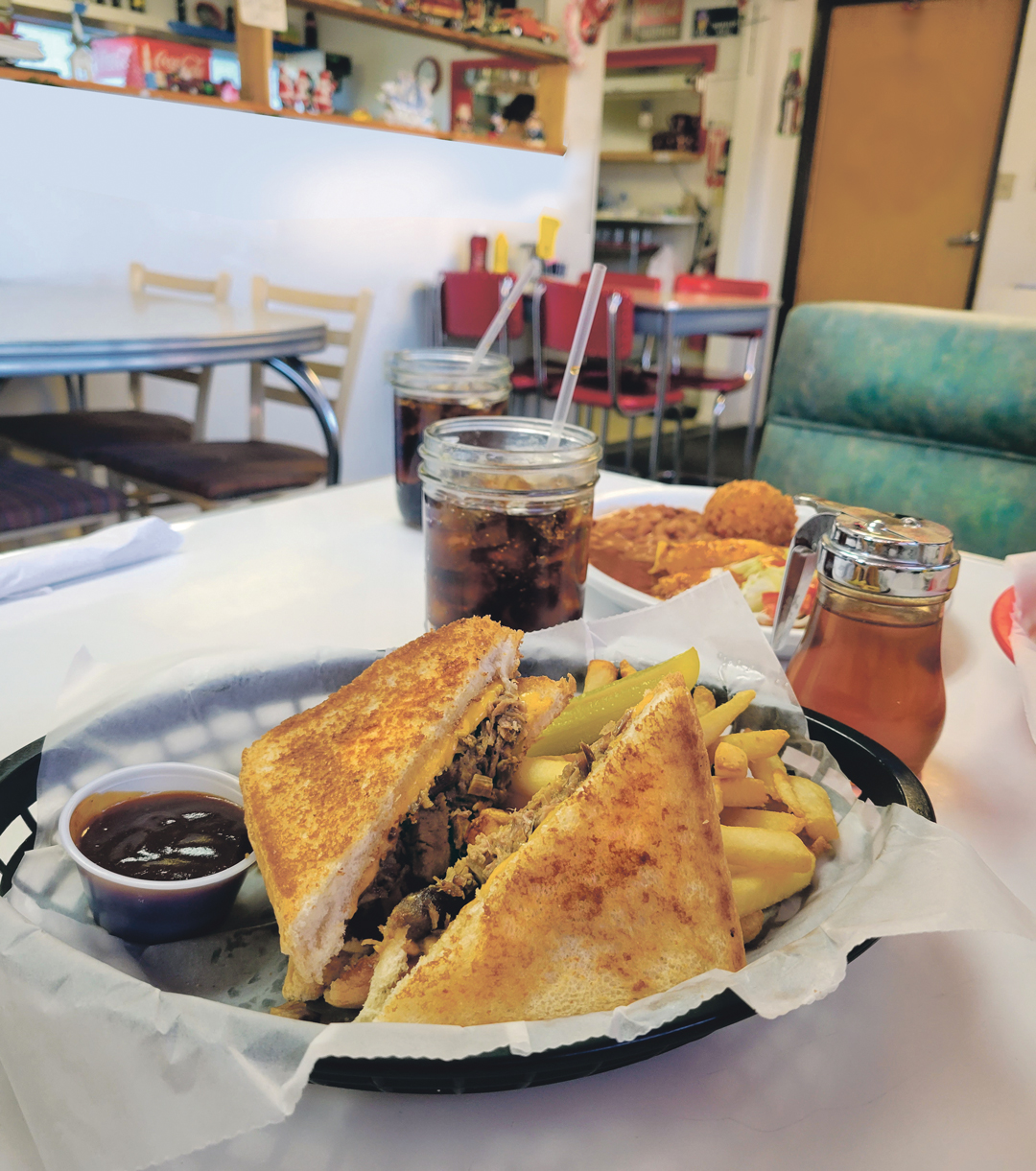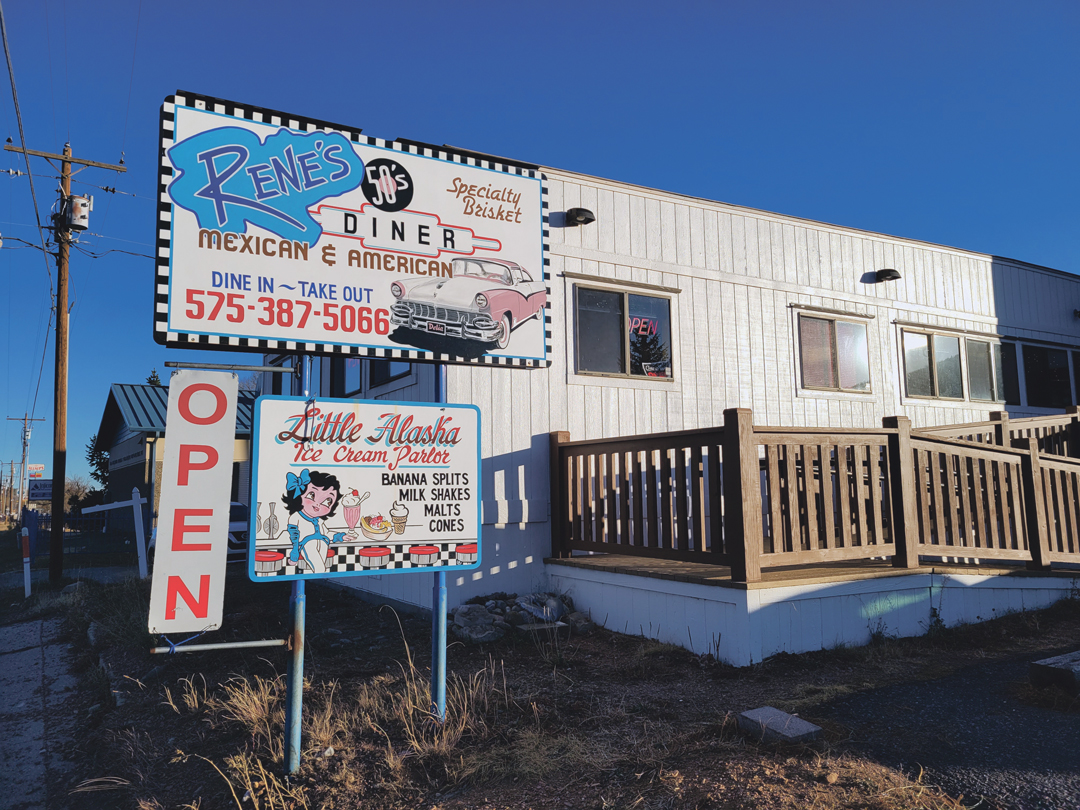A Diner’s Diner
by Jason Conde
photos by Stephanie Cameron

Diner enthusiasts are often divided into two factions. There are purists, loyal to the prefabricated design and streamlined architecture of the ’50s diner aesthetic. With its Formica tables, vinyl-covered booths, and checker-tiled floors, this vision of chrome lines and bold colors has, for many enthusiasts, sanctified the factory-born diner as an icon of the modern American landscape. On the other side of the divide are those idealists who look beyond the diner’s physical form to its lunch-wagon origins—simple, convenient, practical. Untethered to notions of architectural design, this sort of diner encompasses the cafeteria, the greasy spoon, and the hole in the wall, favoring quality food, friendly service, and camaraderie that is warm and, at its best, comforting.
Sandwiched between World War II and the Civil Rights Movement, the purist’s ’50s diner came to represent the social backdrop of a blissfully ignorant and economically prosperous youth. There were suburbs and sock hops, doo-wop and rock and roll. Neon lights gleamed off an abundance of stainless steel, the façade of postwar America itself: industrious, successful, lasting. The era’s zeitgeist lived on past the decade, its ephemeral charm so bright with nostalgia that the ’50s diner became a theme unto itself, a means of traveling back in time.
The idealist’s diner may or may not adhere to specific criteria. There might be music, but not necessarily through a jukebox. There could be chrome, vinyl, and Formica, either fixed into the building or purchased at a restaurant-supply auction. There might be malts and pie, but whoever’s serving it probably won’t be wearing a paper hat. The ideal diner doesn’t concern itself with airs, but with providing good food, good service, and a clean space to enjoy a meal.
~
Enter Rene’s ’50s Diner, established in 2010 after Rene Medellin, a former salesman at Nabisco who later owned a string of restaurants in the Denver area, and his wife, Delia, left Colorado for Delia’s hometown of Chacon. Nestled in the Mora Valley off Highway 518, Rene’s ’50s Diner eschews the purist’s aesthetic and architectural constraints. The wood-panel exterior is painted white, with red-and-blue lettering and trim. Inside, Marilyn Monroe and Elvis prints decorate the walls, along with Elvis street signs and an Elvis clock with metronomically swaying hips. Comic books—an emblem of 1950s social defiance—hang angled like rectangular pennants from an interior window between the main dining room and the Little Alaska ice-cream parlor, which is also part of the diner. On top of a vintage radio cabinet sits a stack of CDs and a three-disk shelf stereo playing the Isley Brothers’ “Shout.”

Originally attracted by the gray color of the modular double-wide along Mora’s main road, Rene was reminded of the diners of his youth in the ’50s, when paint colors were still rationed due to the war. Born to Hispanic parents in the border town of Laredo, Texas, Rene remembers not only when diners were gray but also when he, as a boy who inherited his father’s dark complexion, visited a diner with two older brothers and was told he could only eat in the back of the restaurant. His brothers, with their mother’s fair complexion, were seated up front. “We told them we were brothers, and they didn’t believe us,” Rene said, waving his hand as if shooing a fly away. “Oh well,” he continued. “They can’t do that anymore.”
~
I was looking forward to a big breakfast, which, in my pandemic brain fog, I assumed was served all day. My partner and I studied the menu online, and on the drive up agreed to share biscuits and gravy, hotcakes, and huevos rancheros, but we were thirty minutes too late. Breakfast had ended at eleven. Our alternative was chips and salsa;
a bacon cheeseburger with fries; a Mexican combination plate with a cheese enchilada, a chile relleno, and a beef taco; and a veggie taco à la carte. For dessert, a strawberry milkshake and a scoop of black cherry ice cream.
Each dish was kept simple. Nothing fancy, but everything was done right. The chips were crunchy, and the housemade salsa had just enough jalapeño to accommodate moderate palates. The hand-pressed burger had a salty sear, a thick slice of American cheese melted over bacon, and a buttery, flat-top-
toasted bun. The crinkle-cut fries were hot and crisp. The Christmas enchilada and chile relleno were filled with savory queso asadero and topped with melted cheddar, shredded lettuce, and tomato. The tacos had a crunchy, yielding bite. The charro beans were soft, the rice fluffy. The thick shake flowed easily through the straw, and the ice cream was creamy and smooth, with chunks of halved cherries and no trace of ice.
While we ate, I could see Rene through the kitchen doorway, wearing an apron and food-prep gloves. I heard our server ask a customer if he had finished counting all the change he had at home. At another table, I heard a man joke to the woman sitting across from him. “Look,” he said proudly. “No food on my shirt this time.”
~
My own memorable diner experiences aren’t connected to architecture, aesthetic, or era, but to the people and the food. The server at Lyon’s in Placerville, California, who didn’t correct me when, as a boy, I asked earnestly for a slice of lemon margarine pie. An All-American breakfast at Original Perry’s in South Sacramento, with pancakes, eggs, sausage, and bacon on the mornings I skipped school. And chilaquiles at Mana’s in San Marcos, Texas, the whole operation run by its owner, who once offered me a job.
What is a ’50s diner without the standard trappings, and who gets to make those decisions? “One lady saw the decorations and said we weren’t a real diner,” Delia recalled. “But the locals ask if we like Elvis and Marilyn. We say yes, then they bring in posters, and we hang them up. It’s the community’s diner. We wouldn’t be anything without them.”

Jason Conde
Jason Conde is a writer and educator. He lives in Las Vegas, New Mexico, with his partner and their daughter.

